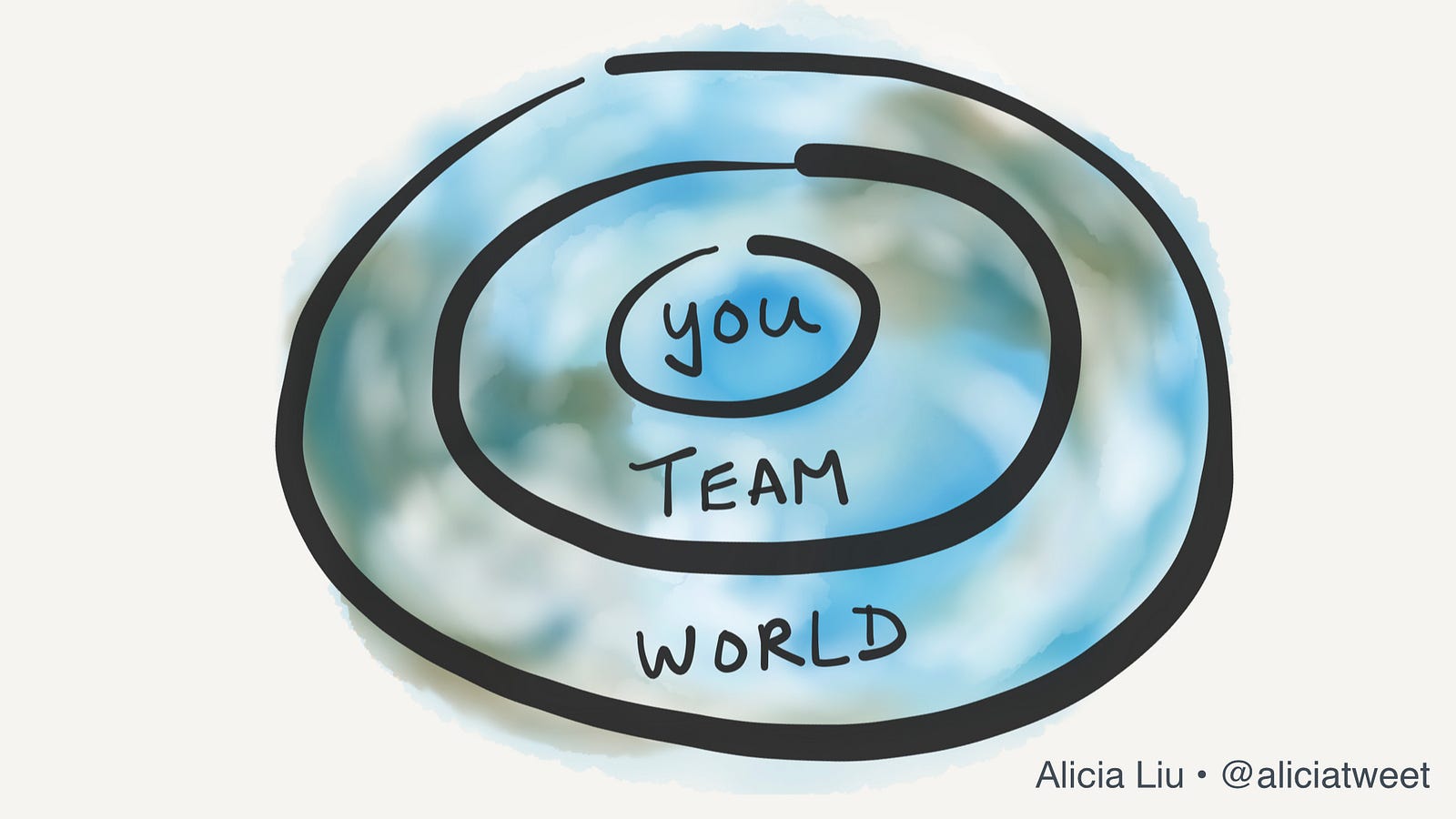Go Slow to Go Fast - Part 3: World – Counter Intuition – Medium
Building Strong Foundations for Leadership
This is the part 3 of 3 of an edited version of my talk on becoming strong leaders, given at Lead Dev London, June 2018. See here for Part 1, and Part 2.

You can be highly productive yourself, and you can grow and develop a great team, but you can’t be a great leader if you’re leading people toward the wrong thing.
The Big Picture
You want to be a great leader, but what do you want to lead people towards?
The promise of technology, and why I studied computer engineering, was because this is what I believed would help people. Technology is very useful. Technology is about building tools, and a huge part of what makes us human is our ability to make and use tools.

Yet, even at the start of my career, I saw this wasn’t so simple. I was a software engineering intern at Amazon the summer of 2005. At the time, working on the website itself or on one of the still-secret projects such as Kindle or what would become AWS were the most desirable teams to work at. I barely made it in, having done my phone interviews from Singapore, where I was on foreign exchange, in the wee hours of the morning. I was placed in one of the last teams at Amazon that didn’t yet have an intern, which happened to be in the organization that ran all of the behind-the-scenes software that handles all of the logistics in all of the warehouses that result in you being able to receive your order in two days. (Amazon Prime would launch that summer.)
One of the perks of working in this less flashy area was getting to visit one of the giant warehouses where Amazon packs and ships millions of orders from. I visited just before J. K. Rowling was about to release Harry Potter and the Half-Blood Prince. This is the book that sold 9 million copies in its first 24 hours and broke all sales records. I got to see endless stacks upon stacks of the same book filling all of the floor space of the cavernous warehouse. It was quite a sight.
But what I also saw there were so many people working in the warehouse, picking and packing boxes, whose every movement is dictated by software.
Just look around at the different tech companies and see how people are used to fill in for the tricky parts in computer systems and algorithms, where people are almost literally cogs in the machine. It’s not hard to see the effects on the consumer side either — what we buy, who we trust, and even what we think is truth is now mediated by powerful algorithms, whose interests are largely driven by profit.
“A specter is stalking in our midst whom only a few see with clarity. It is not the old ghost of communism or fascism. It is a new specter: a completely mechanized society, devoted to maximal material output and consumption, directed by computers; and in this social process, man himself is being transformed into a part of the total machine, well fed and entertained, yet passive, unalive, and with little feeling.”
— Erich Fromm, The Revolution of Hope: Toward A Humanized Technology, 1969
This is not a new observation. Thinkers have foreseen this over the last century, since the advent of computers. Erich Fromm depicted “a completely mechanized society, directed by computers” 50 years ago.
We are creating technology that has ever larger power and impact over people’s lives. Everyone says their technology is improving people’s lives, but whose lives specifically?

I work at Nava, a public benefit corporation where our highest purpose is to have the most benefit to people, through creating technology that truly serves people.
If you work in tech, you already know how to leverage the extraordinary power of technology and you have the skills and resources to become a great leader. The big question is: what will you use your power for?
